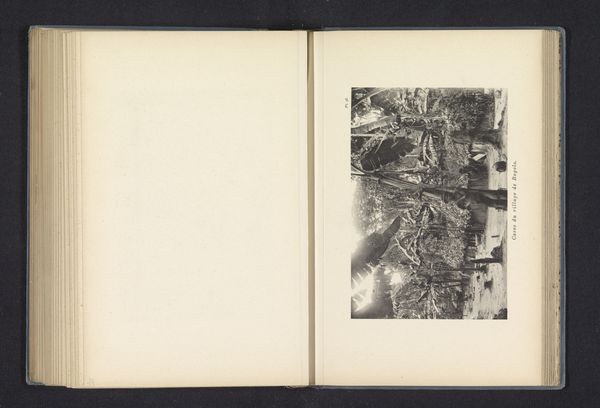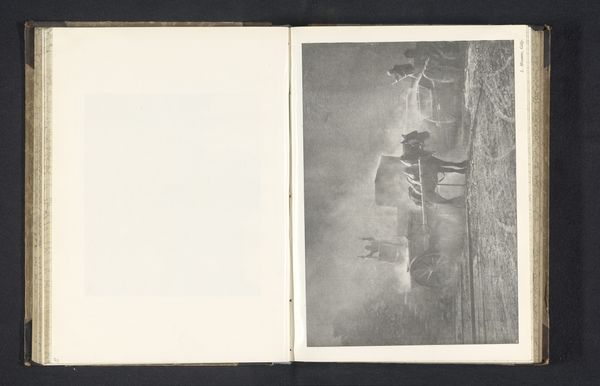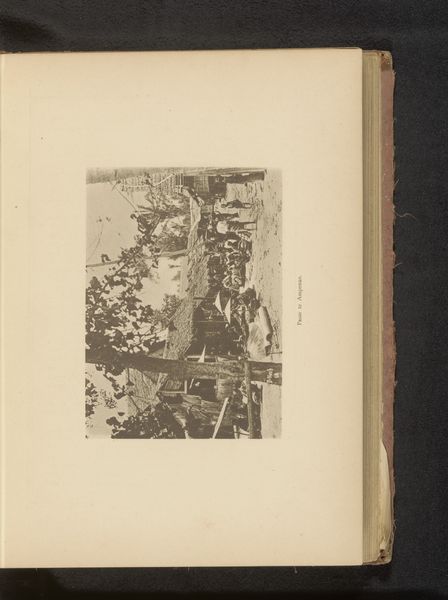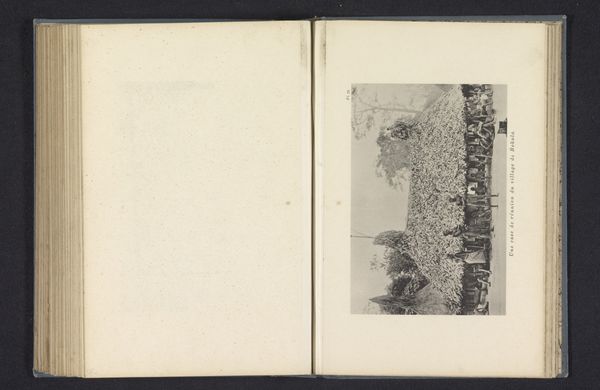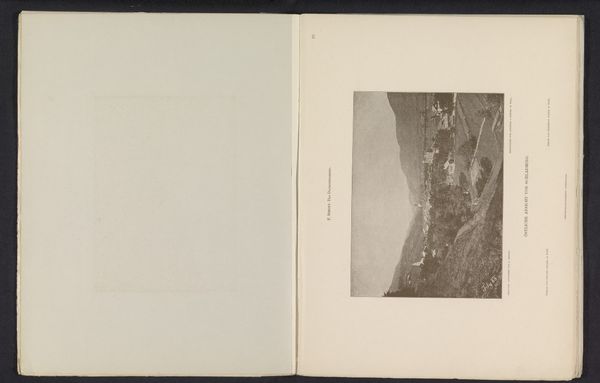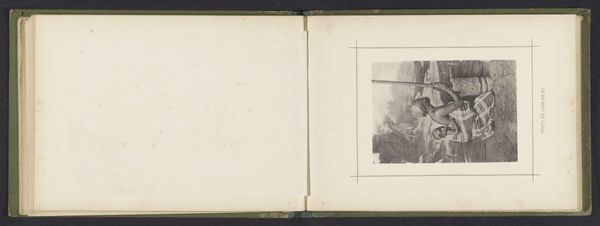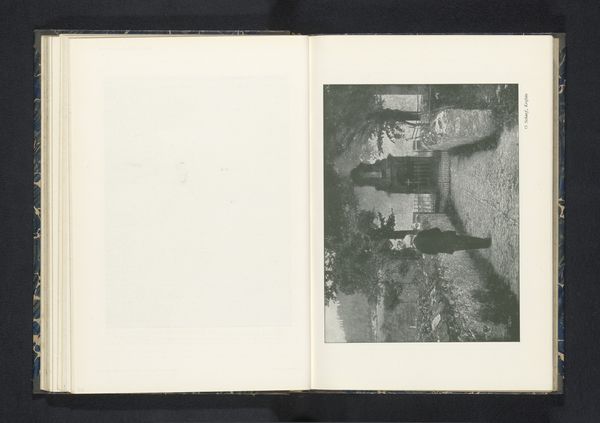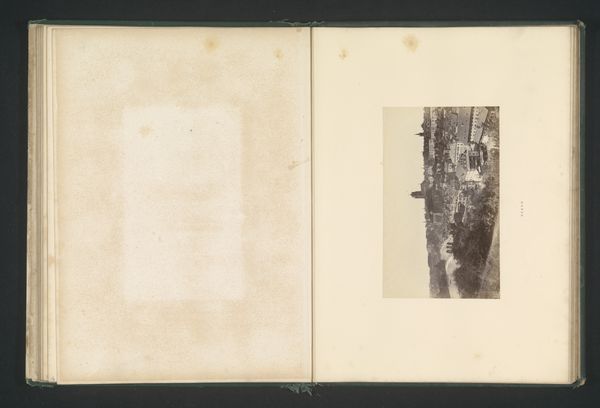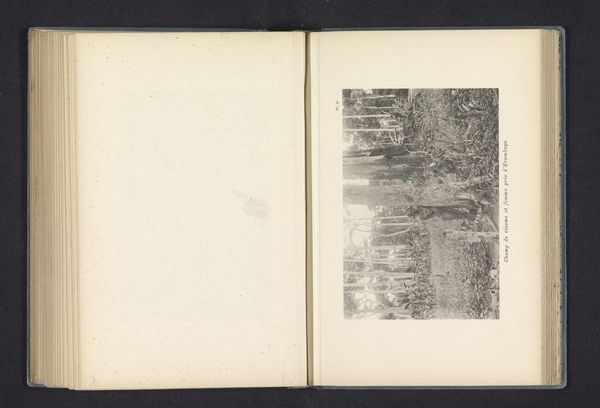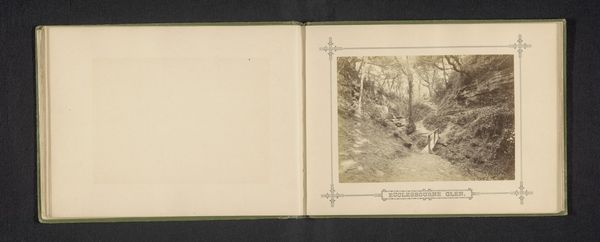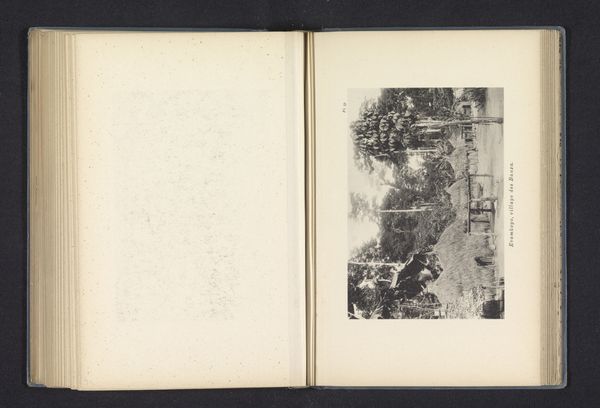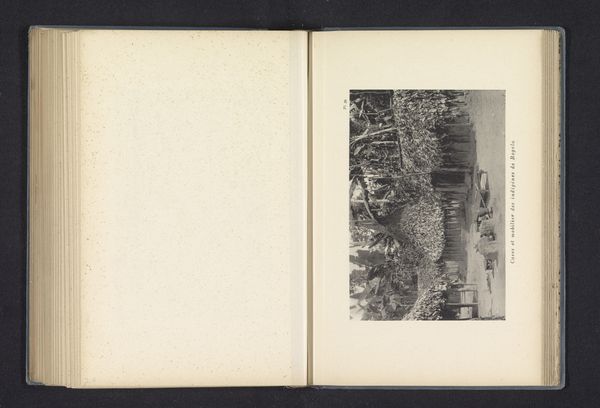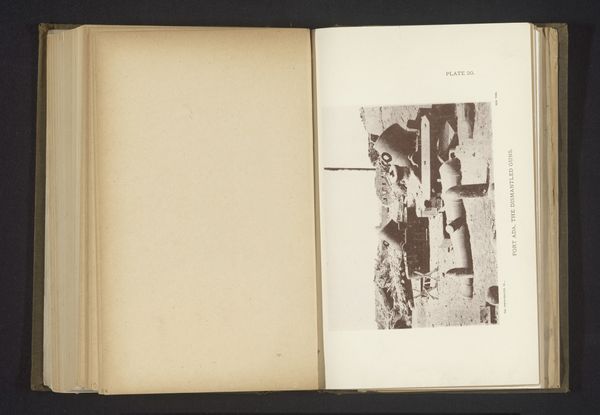
Gezicht op een kar getrokken door een koe op een pad tussen bomen c. 1890 - 1910
0:00
0:00
photography, gelatin-silver-print, albumen-print
#
pictorialism
#
landscape
#
photography
#
orientalism
#
gelatin-silver-print
#
albumen-print
Dimensions: height 188 mm, width 125 mm
Copyright: Rijks Museum: Open Domain
Editor: This photograph, "Gezicht op een kar getrokken door een koe op een pad tussen bomen" by Henry William Cave, dates back to somewhere between 1890 and 1910. It seems to be a gelatin-silver print or albumen print. There's a stillness to this image that makes me wonder about its story. What do you see in this piece? Curator: The quiet you perceive might belie a deeper narrative. Considering the date, Cave's photography intersects with a burgeoning Orientalist movement. This seemingly benign scene—a cart pulled by a cow in what appears to be Ceylon, now Sri Lanka—needs to be examined through a postcolonial lens. Whose perspective are we seeing? Is it a genuine attempt at cultural exchange, or does it reinforce existing power dynamics by exoticizing the ‘other’? How does Cave, as a Western photographer, frame and ultimately possess this image of Ceylon? Editor: So, it's not just about the aesthetic beauty of the photograph. It is about considering the power dynamics inherent in its creation? Curator: Precisely. Photography, especially during this period, was often used to document and categorize people and places, furthering imperial agendas. Consider how the framing, the composition, and even the choice of subject matter might serve to create a particular narrative about the region and its inhabitants for a Western audience. What feelings do you get from the composition of the people within the photograph and what it tells of the relationship between colonizer and the colonized? Editor: It’s thought-provoking to consider that what seems like a simple, pastoral scene could have these underlying social and historical implications. I’ll definitely look at these types of photographs differently going forward. Curator: Understanding the historical and social context allows us to unpack layers of meaning, questioning not just what is shown, but why and for whom. It transforms our appreciation from passive consumption to active engagement.
Comments
No comments
Be the first to comment and join the conversation on the ultimate creative platform.
